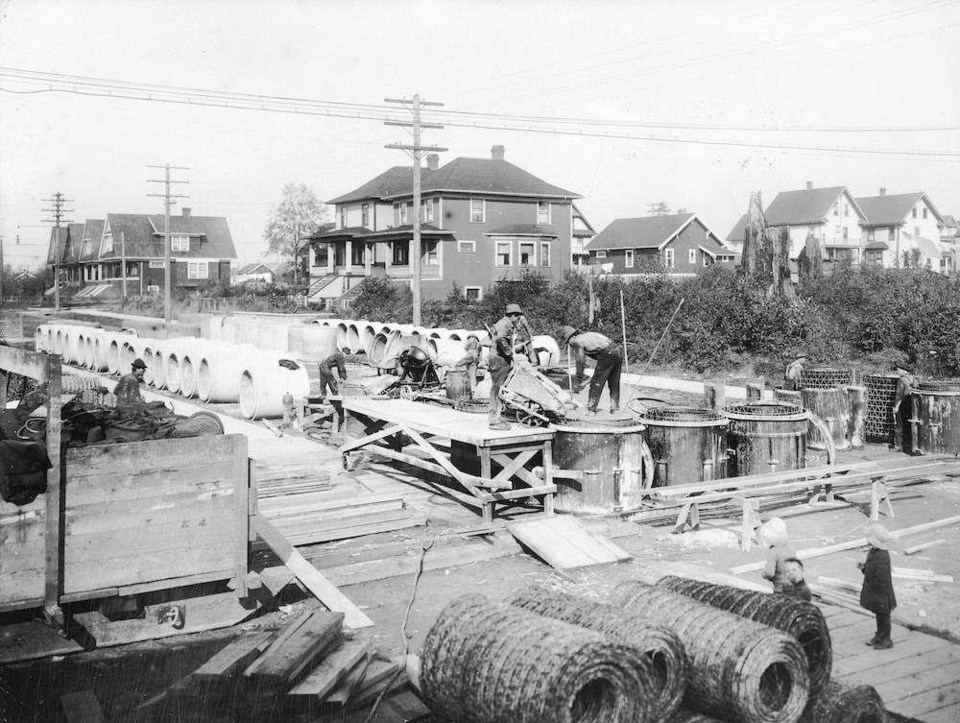Three children stand next to the metal rolls of reinforcing material, watching these men engrossed in their task in this 1913 photograph.
The photograph taken at 11th Avenue and Woodland Drive shows men mixing and pouring concrete into forms, creating pipe segments for the City’s sewerage scheme. The City’s first sewer was built in 1888, two years after Vancouver’s incorporation. However, two and a half decades of population growth combined with lack of standardized design and construction methods of sewers led to typhoid outbreaks, and, in the summer of 1911, beach closures due to pollution.
As a way to address the problems, the municipalities of Vancouver, South Vancouver, Point Grey, and Burnaby formed the Burrard Peninsula Joint Sewerage Committee. The Committee hired the Montreal- based sanitary engineer R.S. Lea to study the issue.
Lea’s report, submitted in February 1913, laid out the infrastructure framework for sewerage and surface water disposal. The report also projected what the needs of the region might be for the following 37 years. In his letter of transmittal that accompanied the report, Lea praised the municipalities for their “attempt at united action in an undertaking of such magnitude in advance of pressing necessity.”
Interested in finding more archival photographs of Vancouver? Search the City of Vancouver Archives’ online database. For more information about the Archives, its holdings, and how to research, visit the Archives’ website.






